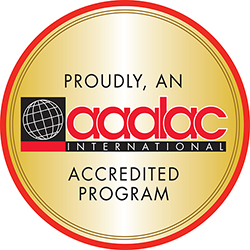Inspections
Why inspect?
Beyond our federal mandate to perform regular inspections of our facilities, our goal is to ensure that laboratory animals receive the highest quality care and to protect and ensure the health of personnel who work with animals at UMD. A high-quality animal care and use program meets those goals, while simultaneously ensuring excellence in teaching and research. Inspections are the primary mechanism by which the UMD IACUC reviews the facilities and laboratories where animal work is performed. A second method of review is performed through our Post-Approval Monitoring program, which follows up on specific procedures after they have been approval by the IACUC – typically, early on in their implementation in the laboratory (see “Post-Approval Monitoring).
How do I prepare for an inspection?
Inspections are an opportunity for the IACUC to view facilities and laboratories as they are run on a daily basis, and since we know that UMD researchers and facilities personnel operate in compliance with the SOPs related to their protocol, IACUC policies, and The Guide, no special preparation of the facility should be required. Having said that, we also understand that it is useful to have a reference for those kinds of items the IACUC inspection teams typically look for. Below we provide a copy of the Laboratory Inspection Checklist that is used by the IACUC to evaluate the operations of laboratories and facilities involved in animal care and use. Please go to the IACUC FAQ page under Inspections if you have additional questions.
It should be noted that each inspection team is comprised of individuals with various backgrounds in research, teaching or safety/hygiene, consequently there may be differences in some of the specific questions and comments a particular team may have from one inspection to the next. If you have questions during the inspection, you should feel free to ask the team members at that time. Please feel free to contact the IACUC office for assistance.
- Animal Facility and Laboratory Inspection Checklist 01.28.25 (PDF)
Signage:
The following is signage that inspectors are looking for in animal areas (housing, labs, surgery). PIs and facility managers can request signage from the IACUC office, if available or print signage, laminate them or cover them with page protectors.
- Allergy warning signs (PDF)
- Safety concerns (English (PDF)/ Spanish (PDF))
- When Injury Happens (PDF)
- Reporting Animal-Related Concerns (PDF)
- Emergency Veterinary Contact (PDF)
Personal training and documentation:
- PI/ animal user training - is taken every 3 years(click here to register).
- Occupational health clearance - clearance is good for 1-3 years depending on the health of the individual. Directions for registration
- Other training (A/BSL2/3, Radiation, etc). Training can be found on ESSR’s website.
- Workers have knowledge of rules/regulations
- Workers have knowledge of/ access to protocol and animal/lab SOPs.
The purpose of the PAM program is to monitor the procedures, experiments, husbandry and general daily activities of approved protocols and SOPs in order to identify excellence in animal use activities, provide education, help ensure compliance and prevent experimental drift. Some benefits of PAM include:
- Ensuring the best quality research by ensuring optimum care and use of research animals with minimal pain and distress
- Providing resources to the Research Community.
- Identifying training needs of campus faculty and students with regards to research animals
- Initiating better communication between the UMD Research Community and the IACUC
- Helping prepare facilities for future inspections.
How are labs selected for a PAM visit?
Laboratories are more likely to be selected for PAM visits based on the following criteria:
- USDA pain categories D and E
- Survival surgery
- USDA regulated species
- Food/water restriction and long term restraint
- Experimentally caused morbidity/mortality
- Protocols with exceptions to the Guide
- Labs/Facilities with previous compliance issues
- At the request of the IACUC
- Request from animal facility
Other labs/facilities that do not meet the above criteria may be selected at random for audit.
How do I prepare for a PAM visit?
As is the case in general, all laboratory personnel working on animal research should have knowledge of the protocol and SOPs associated with the protocol. They should be trained appropriately to carry out procedures as described. Any animal housing should be maintained and documented in a manner consistent with The Guide (or The Ag Guide, if appropriate). Beyond your usual high standards of care and research practice, no additional preparation is necessary. We hope you view a visit from our PAM coordinator as a way in which the IACUC can support your research by providing a fresh eye for observing your procedures and providing helpful feedback for optimizing your research.
Every three years, the University of Maryland Animal Care Program is assessed for reaccreditation by AAALAC, which sends a multidisciplinary team to visit all of our facilities, review our documentation, and interact with faculty, staff and students doing work on animal research projects. For more information, please go to the IACUC FAQ page under inspections.

AAALAC Preparation
Every 3 years, a team from the Association for Assessment and Accreditation of Laboratory Animal Care, International (AAALAC) visits the University of Maryland, College Park animal facilities. During these site visits, the AAALAC team reviews our policies and procedures, walks-through our facilities, and asks a number of questions. In an effort to help you understand what to expect and what kinds of things may need special attention in your lab or facility in preparation for AAALAC visits, we provide the documents here.
We greatly appreciate all of the efforts made toward this accreditation process – your help is invaluable! If you have questions, please feel free to contact the IAUCUC office, or the Office of the Attending Veterinarian.
